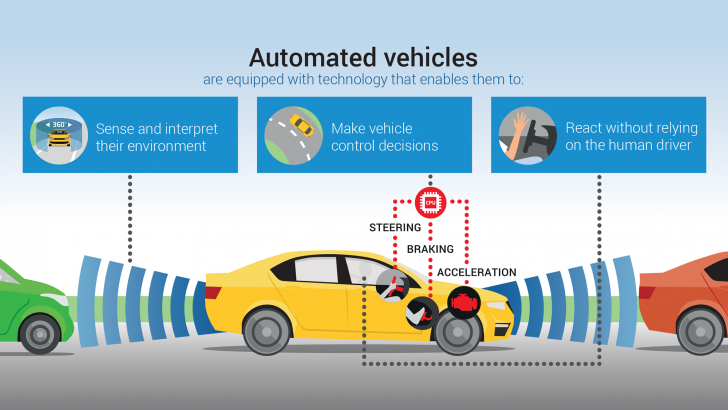ACEA Automated driving: EU auto makers publish ‘check-list’ for policy makers

“Automated driving is a paradigm shift that will change how we travel and transport goods in Europe,” stated ACEA Director General, Eric-Mark Huitema. “It is totally reshaping the future of mobility. It holds great potential to improve road safety, enhance social inclusion by making transport more accessible, ease traffic congestion and reduce emissions – not to mention to give drivers more freedom and comfort.”
With the new European Commission and Parliament now ready for their term of office, ACEA wants to further engage in a dialogue with all stakeholders who have a role to play in the gradual transition to fully autonomous driving.
To mark the launch of this dialogue, ACEA published its ‘Roadmap for the Deployment of Automated Driving in the European Union’ today. This roadmap contains a check-list for policy makers which details the legislative framework that must be put in place at the national, EU and international levels, as well as a timeline outlining the steps towards deployment that must be undertaken over the coming decades.
In addition to setting the right legal framework, policy makers must upgrade Europe’s physical and digital road infrastructure to make it suitable for automated driving. They should also continue to perform large-scale and cross-border testing of automated systems on open roads across the EU, ACEA says.
Huitema: “Automated driving will bring massive changes, so it is crucial to ensure that society at large is ready for it. We must now work towards raising awareness amongst citizens – and their elected representatives – of what all this means.”
As a contribution to this goal, the new ACEA publication explains clearly and visually the terminology, benefits and implications of automated driving, as well as the R&D focus areas of this new ecosystem.
***
Notes for editors
- The infographic may be republished, provided that ACEA is credited as the source. It can be downloaded in high resolution here:
- https://acea.be/uploads/news_images/ACEA_Automated_Driving_Roadmap_infographic.png
- ACEA’s publication ‘Roadmap for the Deployment of Automated Driving in the European Union’ can be found here: https://www.acea.be/publications/article/roadmap-for-the-deployment-of-automated-driving-in-the-european-union
- ACEA’s policy manifesto for 2019-2024 includes ‘smart and convenient road transport’ as one of its four pillars:
- https://www.acea.be/uploads/publications/ACEA_manifesto_2019-2024.pdf#page=4
About ACEA
- ACEA represents the 15 major Europe-based car, van, truck and bus manufacturers: BMW Group, CNH Industrial, DAF Trucks, Daimler, Fiat Chrysler Automobiles, Ford of Europe, Honda Motor Europe, Hyundai Motor Europe, Jaguar Land Rover, PSA Group, Renault Group, Toyota Motor Europe, Volkswagen Group, Volvo Cars, and Volvo Group.
- More information can be found on www.acea.be or www.twitter.com/ACEA_eu.
- Contact: Cara McLaughlin, Communications Director, cm@acea.be, +32 2 738 73 45 or +32 485 88 66 47.
About the EU automobile industry
- 13.8 million Europeans work in the auto industry (directly and indirectly), accounting for 6.1% of all EU jobs.
- 11.4% of EU manufacturing jobs – some 3.5 million – are in the automotive sector.
- Motor vehicles account for €428 billion in taxes in the EU15 countries alone.
- The automobile industry generates a trade surplus of €84.4 billion for the EU.
- The turnover generated by the auto industry represents over 7% of EU GDP.
Investing €57.4 billion in R&D annually, the automotive sector is Europe's largest private contributor to innovation, accounting for 28% of total EU spending.